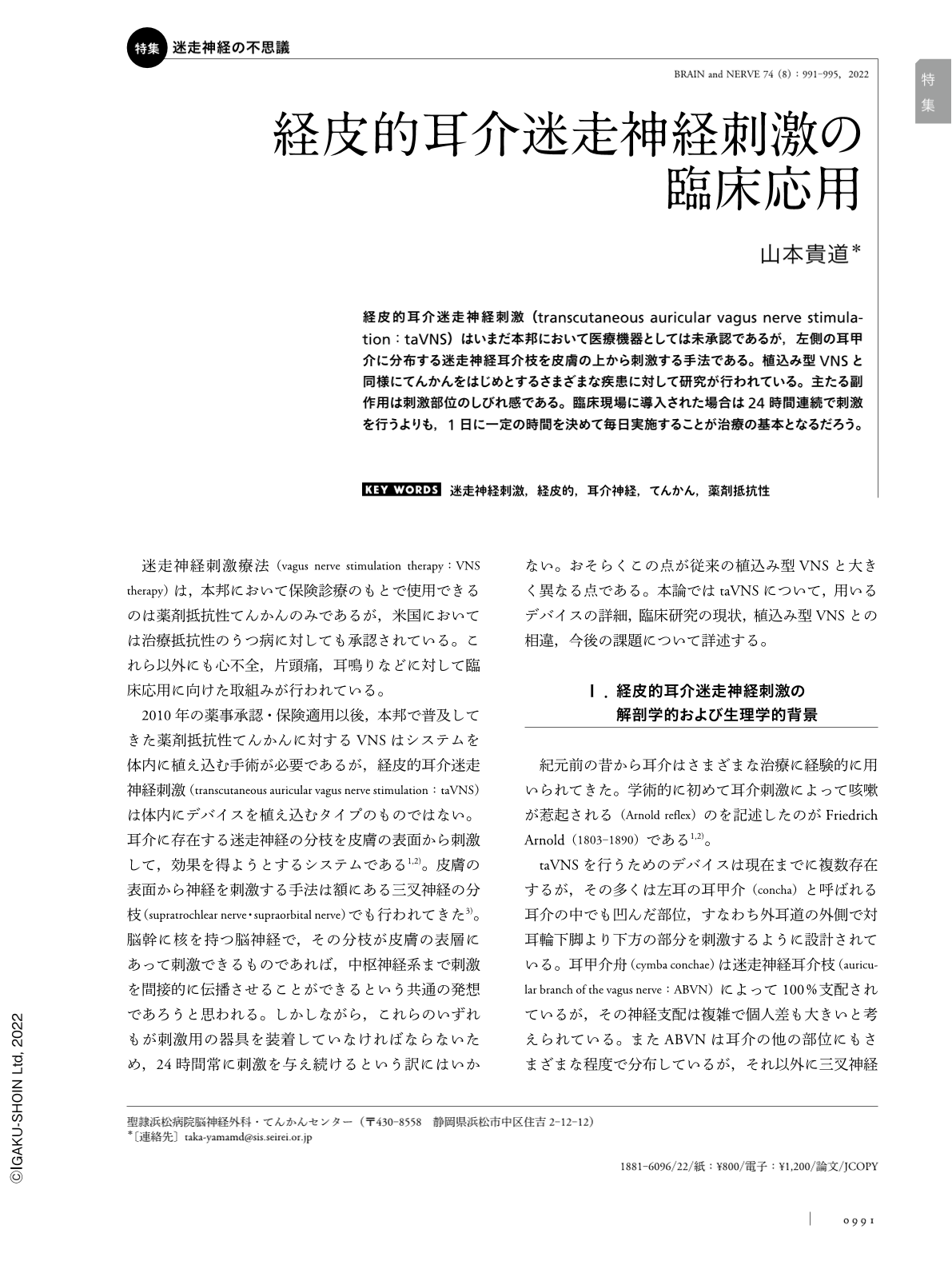Japanese
English
- 有料閲覧
- Abstract 文献概要
- 1ページ目 Look Inside
- 参考文献 Reference
経皮的耳介迷走神経刺激(transcutaneous auricular vagus nerve stimulation:taVNS)はいまだ本邦において医療機器としては未承認であるが,左側の耳甲介に分布する迷走神経耳介枝を皮膚の上から刺激する手法である。植込み型VNSと同様にてんかんをはじめとするさまざまな疾患に対して研究が行われている。主たる副作用は刺激部位のしびれ感である。臨床現場に導入された場合は24時間連続で刺激を行うよりも,1日に一定の時間を決めて毎日実施することが治療の基本となるだろう。
Abstract
Transcutaneous auricular vagus nerve stimulation (taVNS) refers to stimulation of the vagus nerve through the skin of the left cymba conchae and is a unique strategy that is investigated as a useful therapeutic approach for a variety of conditions including epilepsy, depression, cardiac diseases, tinnitus, and migraine. A randomized double-blind clinical trial was performed in patients with drug-resistant epilepsy. Although several pilot studies were performed before this trial and showed that taVNS was safe, well tolerated, and feasible for long-term treatment, no statistically significant difference was observed between the high- and low-stimulation groups, and further studies are warranted to gain a deeper understanding of this subject. A tingling sensation or pain at the site of stimulation is the most common adverse effect associated with taVNS. Therefore, intermittent stimulation, ranging from 30 minutes to several hours, is provided during each session several times a day. Currently, taVNS is not approved for insurance coverage by the Japan Ministry of Health, Labour, and Welfare. Further studies and investigations are necessary in the near future.

Copyright © 2022, Igaku-Shoin Ltd. All rights reserved.


